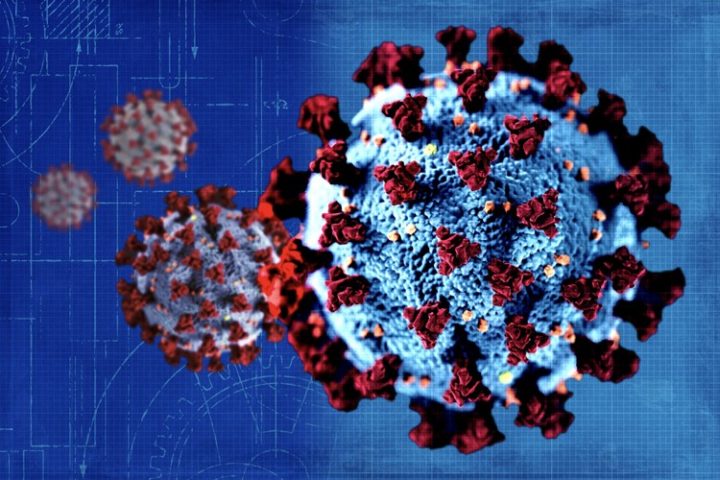
SARS-CoV-2, the virus that causes COVID-19, was not developed as a bioweapon, and “probably” was not genetically engineered, concluded the U.S. intelligence community. The nation’s top spies signaled, however, that a more definitive explanation for the origin of the virus would require “additional information” from China.
On Friday, the Office of the U.S. Director of National Intelligence (ODNI) published a declassified report titled “Updated Assessment on COVID-19 Origins,” which states that SARS-CoV-2 “probably emerged and infected humans through an initial small-scale exposure that occurred no later than November 2019 with the first known cluster of COVID-19 cases arising in Wuhan, China in December 2019.”
Declassified Assessment On COVID 19 OriginsThe key intelligence agencies also agree that “China’s officials did not have foreknowledge of the virus before the initial outbreak of COVID-19 emerged.”
The Intelligence Community (IC) is skeptical of the idea that SARS-CoV-2 was developed as a bioweapon because of the “scientifically invalid claims” used by the theory’s proponents who “not have direct access to the Wuhan Institute of Virology (WIV),” or because they were “suspected of spreading disinformation.”
The report mentioned a study conducted by Hong Kong virologist Dr. Li-Meng Yan that stated SARS-CoV-2 was designed as an “unrestricted bioweapon” that was “intentionally released” by the Chinese government. The IC dismissed those allegations, citing the study was “inconsistent with available technical information on coronaviruses” and because it had “several technical inaccuracies” and omitted “key data points.” It is also stated that “the scientific community did not peer review these articles and some publicly rejected the articles’ claims as scientifically unsound.”
Further, the IC disagrees with some key studies pointing to distinct features of the virus as being unnatural. Claiming that scientists still “do not fully understand the diversity of natural coronaviruses or how often they recombine,” the IC analysts believe that some of the peculiarities of SARS-CoV-2 “could have emerged beyond what we currently understand.” That includes sequences from the human immunodeficiency virus (HIV) that were first reported by Indian scientists in January 2020. IC says that “it is unlikely” the Chinese scientists would have “chosen to intentionally engineer” such sequences. The report does not explain that assessment.
The IC analysts argue that a natural origin and a laboratory-associated incident are both plausible hypotheses for how SARS-CoV-2 first infected humans.
The first hypothesis suggests a Chinese coronavirus researcher was exposed to an animal infected with a virus 99-percent-plus similar to SARS-CoV-2. Other people who come in close contact with animals, such as hunters, farmers, and merchants, could catch it, too. The report does not mention such inconvenient facts as the absence of any animal carrying such a virus at the lab or any evidence of an intermediate species capable of infecting the human host. Almost two years have passed since the outbreak, but the host animal has not been officially identified.
A report also points to the China’s “poor public health infrastructure” and its ineffective infectious disease surveillance system, which “explains” why Beijing “was unable to detect the SARS-CoV-2 exposure as quickly as a suspected exposure in a laboratory setting.”
The second hypothesis, which points to a “laboratory-associated incident,” describes the WIV as a ground zero of the outbreak, since it was an established fact that the institute conducted research with bat coronaviruses or collected samples from species that are known to carry close relatives of SARS-CoV-2. The allegation places specific emphasis on the fact that Wuhan researchers did not always follow strict biosafety protocols.
Interestingly, while some members of the IC believe one or the other explanation for the origins of SARS-CoV-2, others can’t make up their mind on either theory and “remain unable to coalesce around either explanation without additional information.”
The report stresses,
The IC judges they will be unable to provide a more definitive explanation for the origin of COVID-19 unless new information allows them to determine the specific pathway for initial natural contact with an animal or to determine that a laboratory in Wuhan was handling SARS-CoV-2 or a close progenitor virus before COVID-19 emerged.
Further, the report complains the United States and other nations lacked clinical samples and epidemiological data from the earliest COVID-19 cases that would shed more light on the understanding of the virus’s origin.
While China’s cooperation on that matter is viewed as a crucial element of such an investigation, Beijing is said to “hinder the global investigation, resist sharing information, and blame other countries, including the United States.” The IC interprets such behavior as China’s “own uncertainty about where an investigation could lead as well as its frustration that the international community is using the issue to exert political pressure on China.”
Ultimately, the IC report argued that Beijing’s lack of transparency was the reason the world does not know how COVID-19 emerged.
On Sunday, Chinese foreign ministry spokesman Wang Wenbin dismissed the report as a “lie” and once again called on the United States to open up its own laboratories for the international investigation.
Last month, the World Health Organization (WHO) established a new Scientific Advisory Group on Pandemic Origins (SAGO) and called on China to supply the raw data on the first patients infected with the virus to help any new investigation. China has reportedly declined to do so, citing patient privacy rules.





